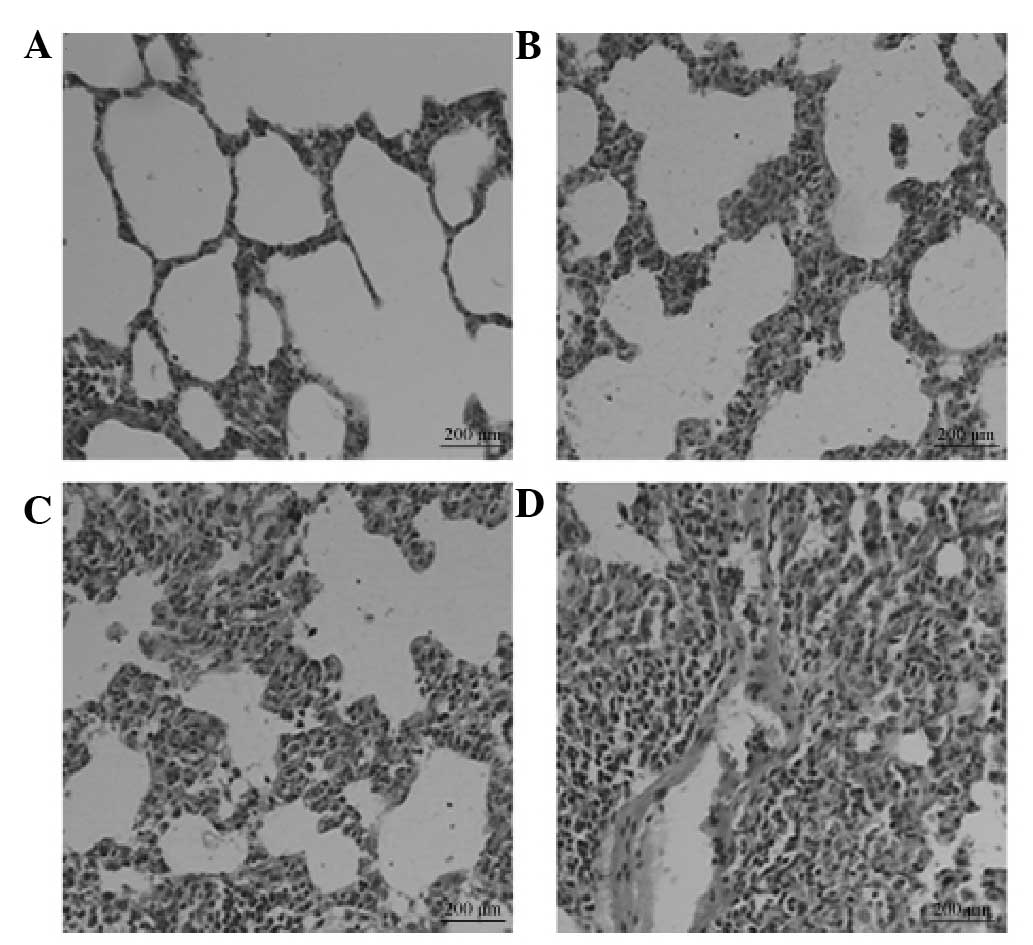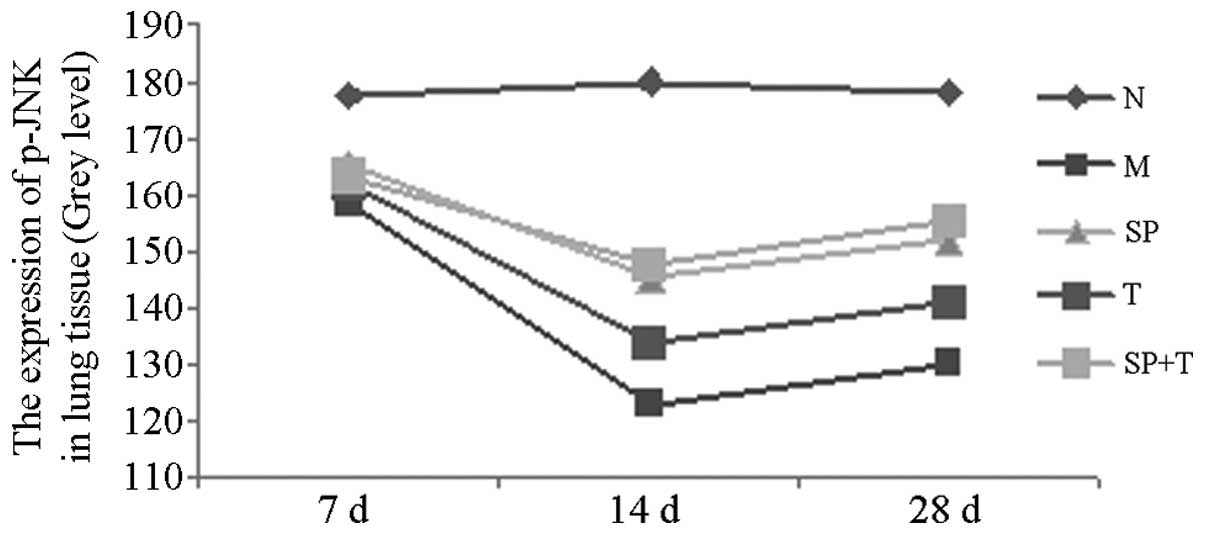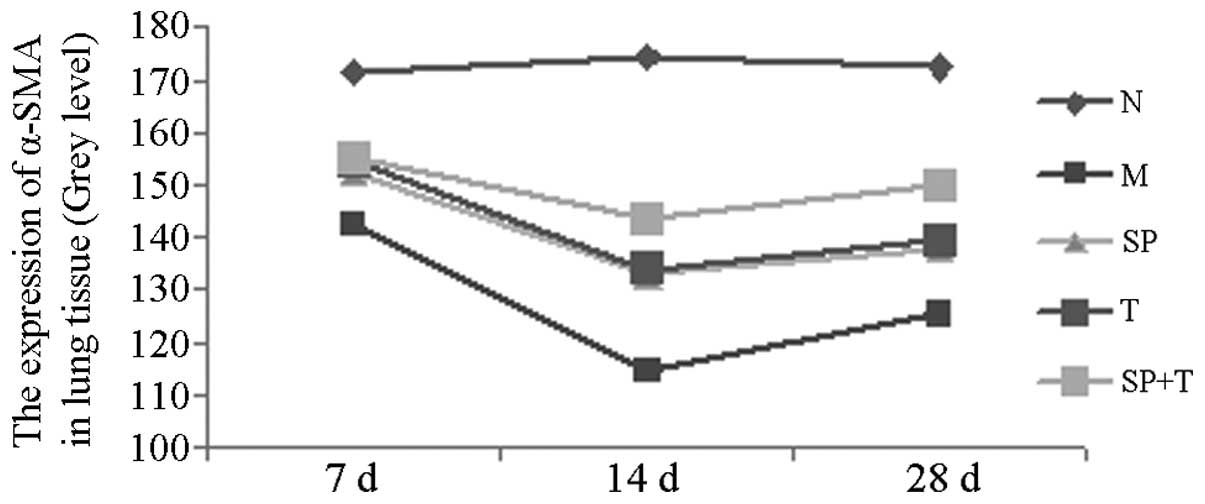Function of the transforming growth factor‑β1/c‑Jun N‑terminal kinase signaling pathway in the action of thalidomide on a rat model of pulmonary fibrosis
- Authors:
- Published online on: December 19, 2013 https://doi.org/10.3892/etm.2013.1457
- Pages: 669-674
Metrics: Total
Views: 0 (Spandidos Publications: | PMC Statistics: )
Total PDF Downloads: 0 (Spandidos Publications: | PMC Statistics: )
Abstract
The aims of this study were to observe the effects of thalidomide on a rat model of pulmonary fibrosis, to determine the protein expression levels of phosphorylated c‑Jun N‑terminal kinase (p‑JNK) and α‑smooth muscle actin (α‑SMA) and to explore the mechanism underlying the preventive effect of thalidomide on pulmonary fibrosis. Ninety healthy male Wistar rats (200±20 g) were randomly divided into control (N), model (M), SP600125 (SP), thalidomide (T) and SP600125 plus thalidomide (SP + T) groups. Pulmonary fibrosis models were established in groups M, SP, T and SP + T by the intratracheal instillation of bleomycin (BLM). A gavage of thalidomide was administered to the rats in groups T and SP + T once daily, whereas normal saline was administered to the rats in the other groups. The rats in the SP and SP + T groups were injected intraperitoneally with SP600125 following BLM administration, whereas the rats in the other groups received dimethyl sulfoxide. Rats were randomly sacrificed on days 7, 14 and 28. Pathological changes were examined by light microscopy using hematoxylin and eosin staining. Hydroxyproline (HYP) levels in the lung tissues were detected using alkaline hydrolysis. The protein expression levels of p‑JNK and α‑SMA were measured by immunohistochemical staining and western blot analysis. In group M, alveolitis was most serious on day 7 and then eased on day 14; marked pulmonary fibrosis was observed on day 28. The fibrosis was markedly attenuated in the SP + T group compared with that in group M. The HYP content increased gradually with time after BLM administration and peaked on day 28. On days 14 and 28, the HYP content was lower in groups T and SP than in group M (P<0.05). The expression levels of p-JNK protein and α-SMA were significantly lower in groups SP, T and SP + T than those in group M on day 14 (P<0.05). The expression level of α-SMA was lower in group SP + T than those in groups SP and T on days 14 and 28 (P<0.05). The expression level of p-JNK protein in group T was higher than those in groups SP and SP + T on days 14 and 28 (P<0.05). Thus, thalidomide eased the degree of BLM‑induced pulmonary fibrosis in rats by downregulating p‑JNK and α‑SMA expression.















